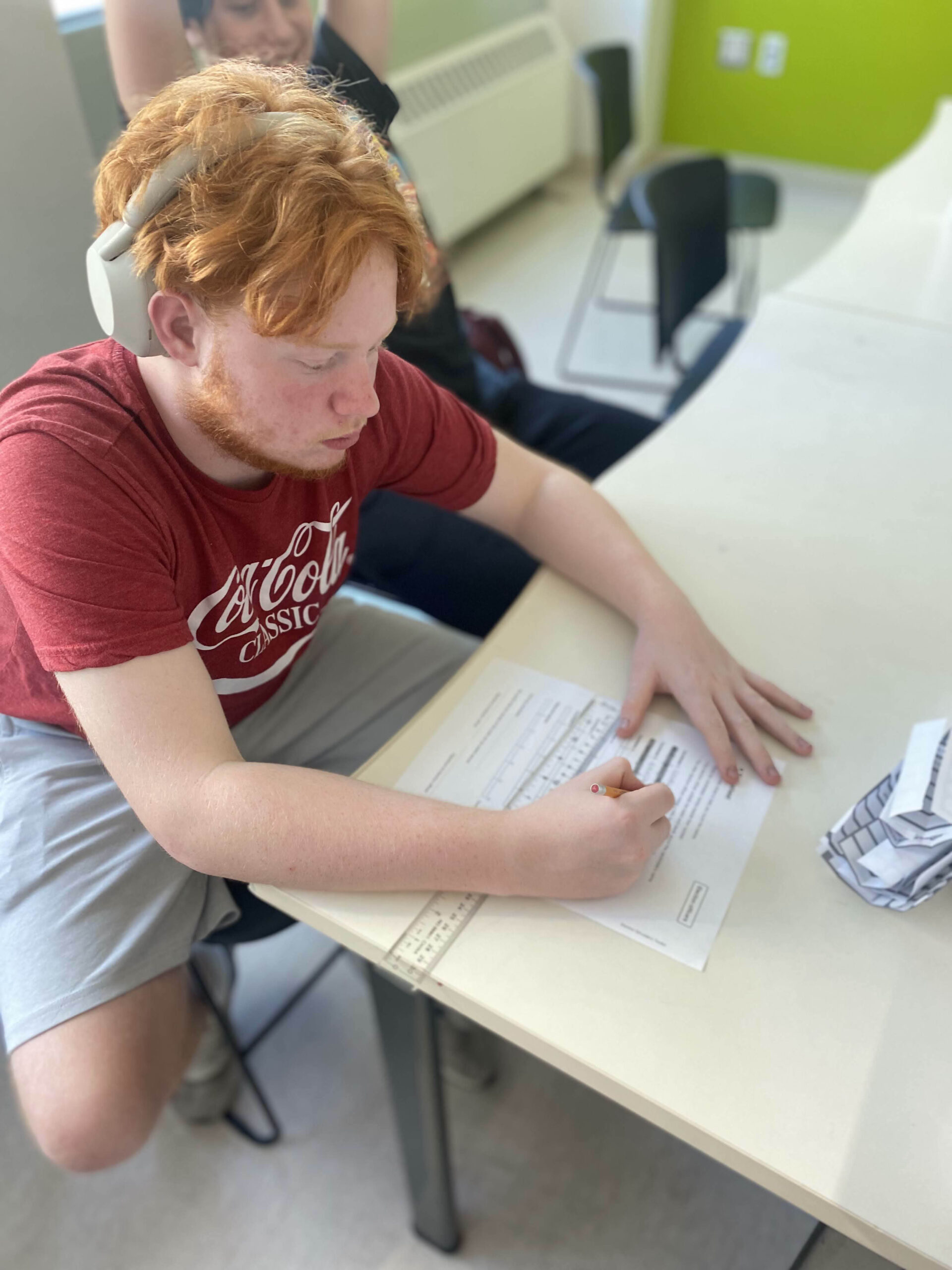Sustainability is all about living comfortably in our world while using resources responsibly so that future generations can do the same. Unfortunately, our world isn’t always a sustainable place—but our Grade 12 Living in a Sustainable World students tackled the challenge with creative workshops covering urban biodiversity, native species, and ways to protect local ecosystems.
Without further ado, let’s dig into the workshops!
Seekers
By J.P.
This workshop explored biodiversity in the city. “Biodiversity” might sound complex, but it simply refers to the wide variety of species that share an ecosystem—including urban spaces! To prove this, J.P. introduced students to the Seek app by iNaturalist, which helps users identify plants and animals using their phone cameras. Participants then headed to the park across the street with a scavenger hunt checklist, finding up to 10 different species—despite the winter weather!
Daybreak
By S.R.
S.R. introduced students to Daybreak, a unique, collaborative board game about sustainability. Unlike competitive games, this one challenged players to work together to meet the needs of their assigned countries while staying carbon-neutral. The workshop’s goals were to introduce students to sustainability-focused games and highlight both the obstacles and innovative solutions in creating a greener world.
City Safari
By F.A-L.
F.A-L. led a workshop on how species in the city are interconnected, focusing on the relationship between rats—a species subsidized by humans—and their predators, hawks. The inspiration? A red-tailed hawk that frequently perches on a tree across the street! Through an engaging presentation, F.A-L. demonstrated how every species plays a role in the urban ecosystem and emphasized the importance of respecting and protecting our shared environment.
Seed Dumplings
By M.R.
M.R. focused on biodiversity by teaching participants about Ontario wildflowers and how to make seed dumplings—small, biodegradable balls containing native plant seeds. These can be scattered in garden plots around the city to promote local plant growth. The workshop highlighted how even small, simple actions—like planting native species—can have a positive environmental impact.
Bruce’s Clothing Swap
By B.K.
B.K. tackled textile waste by organizing a school-wide clothing swap. Students brought in unwanted clothes and traded them for new-to-them items-for free! B.K. who is interested in fashion, shared with students how clothing waste contributes to landfills and environmental problems, and encouraged students to think about sustainable fashion choices. The event was such a success that students are already asking for it to become an annual tradition!
Gourmet Today and Tomorrow
By R. T., L. B., and J. I.
This workshop combined cooking skills, food insecurity awareness, and waste reduction. Students gathered in the Orange Room, where J.I. talked about how learning how to cook can help reduce food waste. Then participants split into groups to make pancakes. While pancakes cooked, R. led a discussion on food insecurity, a growing problem in Toronto, and talked about how cooking skills can help people eat more nutritiously and affordably. L. then explained how to properly recycle and dispose of food waste. The workshop highlighted both the social and environmental aspects of sustainability—all while making (and enjoying) a delicious snack!
City Chicks
By E.R. and M.T.
E.R. and M.T. led a hands-on workshop to help prevent bird-window collisions—a major cause of bird deaths in urban areas. Students made paper bird cutouts to stick on windows, a simple but effective way to alert birds and keep them from flying into glass. E.R. focused on the role birds play in urban ecosystems, while M.T. emphasized practical ways to protect them. The goal is to fill the windows with colorful bird silhouettes—a creative and impactful step toward making the city safer for wildlife.
Our World Today and Tomorrow was an assembly that was both fun and meaningful, offering students a chance to learn about sustainability through hands-on activities.
On behalf of the entire Living in a Sustainable World class, thank you to everyone who participated and supported our workshops—it made all our planning and hard work worthwhile!
Sustainable Suggestions from the Grade 12s!
- Pay attention to the plants and animals in the city. It’s cool, and it helps shift our mindset about what a city is. A city is an ecosystem!
- Participate in citizen science! Using Seek by inaturalist is a cool way to contribute to an open database of information on plants and animals around you. Scientists use the data for their studies too so you are helping them out!
- Plant native plants! Especially Milkweed, the Monarchs love Milkweed and Monarchs are very cool and weird.
- Are you building things in the city, or renovating? Use bird-safe glass to protect our migratory birds!
- Keep your eye out for our city’s population of Peregrine Falcons and Red Tailed Hawks because they are cool! But birder beware – you may see a pigeon disembowlment.
- Cooking cuts food waste, and it’s fun!
- Advocate for a national food insecurity policy. Food banks can’t keep up with the need right now and a lot of people are suffering.
- Did you know we can’t recycle black plastic in the city? But did you know that now we can recycle reusable coffee cups and lids?! Use Waste Wizard to make sure you are recycling everything you can!
- Play sustainable games like Daybreak, and Pandemic, and Rain World – they are fun and creative and hopeful!
































